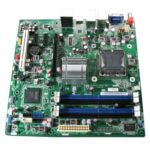In today’s digital world, understanding computer hardware is essential for students across various fields. Whether you’re a computer science major or just curious about how your laptop functions, a strong grasp of hardware components will benefit you immensely.
What is Computer Hardware?
Computer hardware refers to the physical components of a computer system that you can touch and see. These components work together to execute tasks and run software applications.
Key Components of Computer Hardware
1. Central Processing Unit (CPU) :

#cpu
#central processing unit
Function: Known as the brain of the computer, the CPU processes instructions from programs.
Types: Dual-core, quad-core, and higher (the more cores, the better the performance).
Brands: Intel and AMD are the leading manufacturers.
2. Motherboard

Function: Acts as the main circuit board connecting all components
Important Parts:
RAM slots – Holds memory modules.
CPU socket – Houses the processor.
PCI slots – For adding graphics and other expansion cards.
3. Random Access Memory (RAM)

Function: Temporary memory that stores data the CPU needs immediately.
Importance: More RAM allows smoother multitasking and faster processing.
Common Sizes: 4GB, 8GB, 16GB, and higher.
4. Storage DevicesHard Disk Drive (HDD) – Affordable but slower, used for storing large amounts of da
4. Storage Devices

Hard Disk Drive (HDD) – Affordable but slower,
used for storing large amounts of data.
Solid State Drive (SSD) – Faster and more durable, ideal for quick boot times.
External Drives – Portable storage solutions.
5. Power Supply Unit (PSU)

Function: Converts electricity from an outlet into usable power for the computer.
Tip: Always choose a PSU with slightly more power than required to support future upgrades.
6. Graphics Processing Unit (GPU)

Function: Handles rendering of images, videos, and games.
Types: Integrated (built into the CPU) and dedicated (separate cards for heavy graphics tasks).
Use Case: Essential for gaming, video editing, and 3D rendering.

7. Cooling System
Function: Prevents the computer from overheating.
Types: Air cooling (fans) and liquid cooling systems.
8. Input and Output Devices

Input: Keyboards, mice, webcams.
Output: Monitors, speakers, printers.
Importance: These devices allow interaction with the computer.
How to Choose the Right Computer Hardware
1. Purpose of Use
Basic Use: For web browsing and document editing, a mid-range CPU and 8GB RAM is sufficient.
Gaming: Requires a powerful GPU, high-speed RAM, and SSD storage.
Video Editing: A high-core CPU, large RAM, and dedicated graphics card are essential.
2. Budget
Prioritize essential components like the CPU and motherboard. RAM and storage can be upgraded later.
3. Future-proofing
Select hardware that supports upgrades, ensuring longevity. Look for motherboards with additional RAM slots and PCI expansion options.
Common Computer Hardware Issues and Solutions
1.Slow Performance – Upgrade RAM or switch to an SSD.
2. Overheating – Clean the cooling system or invest in better fans.
3. No Boot – Check power connections and ensure the PSU is functional.
4. No Display – Verify GPU connections or replace the monitor.
Tips for Students Assembling Their First Computer
Research Thoroughly – Understand compatibility between components.
Use Online Tools – Websites like PCPartPicker help ensure parts work together.
Watch Tutorials – Visual guides simplify complex processes.
Conclusion
Computer hardware may seem complicated at first, but breaking it down into individual components makes it easier to understand. By learning the basics, students can confidently troubleshoot, upgrade, and even build their own systems. This foundational knowledge opens doors to numerous opportunities in tech-related fields.

Leave a Reply